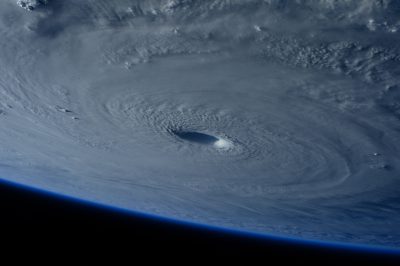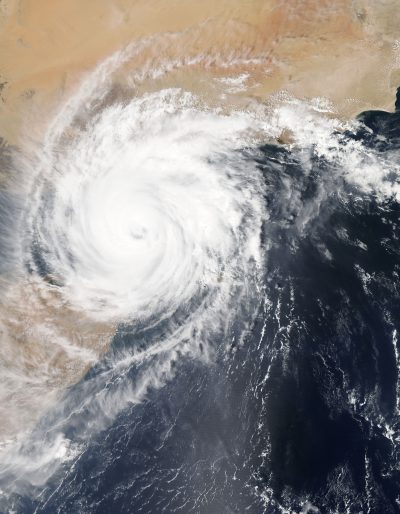Hurricane Unwinder
Finnish startup, Hurricane Unwinder, operates in a field that is affecting lives of millions of people. As the very name suggests, the company is currently building an intensity forecast for hurricanes, typhoons and tropical cyclones. The innovation is particularly useful for physical and financial disaster management and risk reduction.
On its website, the company emphasizes this point of view: “A one-point change on the five-point Saffir-Simpson scale statistically translates to a seven-fold change in damages”. Therefore, it’s easy to understand that ”intensity information is of key importance”, and that there exists a high demand for accurate intensity forecast providers.
Hurricane Unwinder uses the world’s first computer-vision-based tropical cyclone forecast system. That enables the company aim to provide user interface that can intuitively present probabilities of hurricane intensities and their tracks.
Curious to know more facts behind Hurricane Unwinder? Visit their website here [https://hurricaneunwinder.com/].
Innovation with a high demand
Hurricane Unwinder provided us further information and history of the startup:
“The company was spun off from academic research at Finnish Meteorological Institute by Svante Henriksson, PhD in climate physics and serial entrepreneur Antti Pasila. We realized that the technological and business landscapes around hurricane, typhoon and tropical cyclone disaster management and risk reduction are changing rapidly and that our novel solutions are in high demand with the government, insurance, B2B sectors and the 1.6 billion people living in exposed areas. Top developers, a visionary and resourceful investor and a supportive ecosystem have been key in the progress we’ve made since founding of the company in January 2019.”
Hurricane Unwinder has already stirred up interest across the globe, and the company has just started its cooperation with European Space Agency Business Incubator Center.
“We’ve received 150 000€ in investment from Icebreaker VC. We’ve won first prize in the Copernicus Masters Astrosat Disaster Management Challenge and 2nd prize in the ESA BIC Midnight Sun hackathon. A pilot project with the Vietnamese government is operational in 2020.”
“Being recognized by ESA BIC helps with attracting talent and customers. The network and resources of ESA BIC are a big support for a small and growing startup like ours.”
From fusion reactors to hurricane detection
We had an opportunity to make a quick interview with Svante Henriksson.
Henriksson revealed that his idea of hurricane forecasts came to be by the most curious way. During the years 2004–2006 Henriksson was working in a team that researched fusion reactors. Inside of each reactor was donut shaped circle of 100 million degree hot plasma. In the elliptical cross section, the plasma formed a kind of vortex, which reminded Henriksson of hurricanes. “So… That’s basically where the idea came from originally”, Henriksson cracks up after semi-long lecture of nuclear fusion reactors.
Nowadays, things are moving quickly, and the intensity forecast software is going to be ready in the near future. “At the moment, our product is nearly the best one on the field it operates. Our main goal is to push it over that border and at some point we are going to be the very best”, Henriksson declares.
Icebraker VC has been a significant investor for the startup. “They have given us a lot of resources and through them we have had a lot of help and research materials”, Henriksson tells me. Later he also extends his gratitude to ESA BIC: “It is wonderful that ESA is providing free data for everyone and the fact that they are supporting other startups is great. There are surely all kinds of innovations that could benefit from the cooperation.”
Downgrading the intensity
The software is not the only innovation that the company is working on. Henriksson reveals that they also have something prepared on the hardware side of things. The new innovation is not ready yet to be launched but Henriksson reassures that they will keep their audience informed in the coming weeks. Thus, the exact nature of the new innovation will remain a mystery for now. The only hint Henriksson is willing to give is that the company will “broaden its horizon to measurement technology.”
Because of the global warming, demand of a trustworthy and accurate forecast system is more current than ever. Henriksson tells me that even though number of hurricanes is not increasing per se, intensities of the storms are. That means severity of the storms is going to be multiplied in the future.
In the long run, the company is also interested in climate engineering. That would mean that the company would not only be able to forecast the coming storm, but to truly downgrade its intensity. In other words, the future would be safer from hurricanes, typhoons and tropical cyclones.




